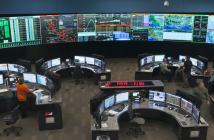Opinion
- Last Thursday, we received another stark warning about the status of the climate crisis.
- But this time, it came not from scientists forecasting the future.
- Instead, it was a data point from the Earth itself.
- Scientists at Esperanza Base in the Antarctic Peninsula reported the highest temperature recorded on the continent to date: 18.3°C (64.9°F), warm enough to wear shorts and a t-shirt.
This is only the latest in a series of dangerous signs that we have seen over the last few months, and follows a devastating series of bushfires and record temperatures in Australia. Together, these tell us that the climate crisis is not a future event—it has already begun. And it underscores the urgency of our task to transition the world off of fossil fuels to a clean energy future.
The climate crisis is not a future event—it has already begun. And it underscores the urgency of our task to transition the world off of fossil fuels to a clean energy future.
These ominous portents from the Southern Hemisphere point to future conditions that could be much worse if we do not move quickly. The Intergovernmental Panel on Climate Change has stated that in order to secure a high likelihood of keeping average warming at or below 1.5°C this century, we must reduce global greenhouse gas emissions 45 percentby 2030 and reach net-zero emissions by mid-century.
By the Numbers
At Rocky Mountain Institute, we have investigated what this means for the global energy system. In the electricity system alone, this will require growing renewables to 60 percent of global generation and reducing global coal use by 80 percent in ten years—a sharp acceleration of changes that are already underway. And the need for action spreads across sectors, requiring rapid deployment of electric vehicles while simultaneously shifting urban mobility to more efficient and shared options, tripling the rate of energy productivity improvements, and even re-engineering the production of such basic inputs as cement and steel.
These needs not only cross sectors, but also continents. To reach the 1.5°C target will require action from the world’s largest economies, including those which represent the largest sources of emissions today and those that are on course to be the biggest emitters in the future. This means steeper emissions reductions in developed nations such as the United States, while developing nations including China and India will need to reign in coal use and shift rapidly to clean energy while still growing their economies.
A path to achieving these transformations is laid out in our recent report, Seven Challenges for Energy Transformation. This report finds that while there are some areas where nascent technologies need further development, moving to dramatically reduce emissions does not require breakthroughs. Technologies to reduce emissions and transition much of our economy—including the electricity, transportation, and heating sectors—exist, have been proven, and need to be scaled rapidly.
“The urgency of the climate crisis demands that we massively accelerate and scale action to reduce emissions, moving beyond doing what we can to doing what we must,” explains Jules Kortenhorst, CEO of Rocky Mountain Institute. “This will require a shift in thinking to focus more on change models that can have rapid and enormous impact, such as financial tools and business model changes.”
The consequences of failing to enact a rapid transition are damning. There are 7 million cubic miles of ice in Antarctica alone, enough to raise global sea levels by 200 feet. When even a small portion of this melts, coastal cities such as Dhaka, Hong Kong, Manila, Melbourne, New York, Rotterdam, Tokyo, and many others will go underwater. The economic, political, and human repercussions of such a scale of disaster are hard to fathom.
Ultimately, nothing less than the future of our civilization may be at stake. We look forward to working with you to take on this historic challenge.
Author: Christian Roselund
This article was originally published by the Rocky Mountain Institute and is republished with permission.
Disclaimer: The articles expressed in this publication are those of the authors. They do not purport to reflect the opinions or views of Green Building Africa or our staff. The designations employed in this publication and the presentation of material therein do not imply the expression of any opinion whatsoever on the part Green Building Africa concerning the legal status of any country, area or territory or of its authorities.











